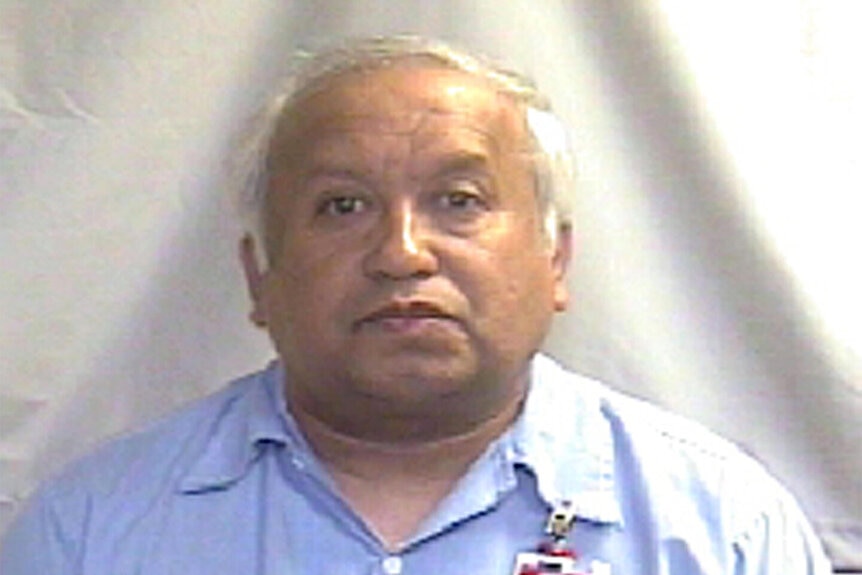Create a free profile to get unlimited access to exclusive videos, breaking news, sweepstakes, and more!
Who is Dru Sjodin, Whose Murder Changed the Way We Track Sex Offenders?
Sjodin's 2003 disappearance led to the formation of the Dru Sjodin National Sex Offender Public Website, which gives the public access to sex offender data.

Dru Sjodin was a 22-year-old student at the University of North Dakota in Grand Forks when she was abducted from a shopping mall parking lot in the city in 2003 — her body not found until five months later.
The man who would be convicted of killing Sjodin was a registered sex offender in Minnesota who had been recently released from prison at the time she disappeared, resulting in her death having a lasting impact on the way sex offenders are tracked.
RELATED: What Happened to Madison Scott, Whose Remains Were Found 12 Years After Her Disappearance?
The national sex offender registry was renamed for Sjodin in July of 2006 and, according to the Dru Sjodin National Sex Offender Public Website, “provides information to the public on the whereabouts of registered sex offenders, regardless of state, territory or tribal boundaries.”
When did Dru Sjodin go missing?
Sjodin, originally from Minnesota, disappeared after her shift at Victoria’s Secret at Columbia Mall in Grand Forks on November 22, 2003, according to ABC News. Sjodin was on the phone with her boyfriend when she was abducted, who told investigators that she said “Oh my God” before the call was disconnected. Sjodin’s body was found near Crookston, Minnesota on April 17, 2004.
Who killed Dru Sjodin?
Alfonso Rodriguez Jr., a Minnesota man who was 50 at the time, was arrested on December 1, 2003 on charges of kidnapping Sjodin, according to ABC News. He had previously been convicted of rape, attempted kidnapping and aggravated assault. After serving 23 years for a 1979 attempted abduction, he was released from prison in May of 2003, just six months before Sjodin disappeared in November.
When Sjodin’s body was found, evidence pointed to her being raped and murdered, according to court documents, the Grand Forks Herald reported. Her half-dressed remains were found in a ravine and her wrists had been tied behind her back.
Where is Alfonso Rodriguez now?
Rodriguez was initially convicted in 2006 in the kidnapping and killing Sjodin and sentenced to death, according to the Associated Press. After appealing his conviction several times, a federal judge overturned Rodriguez’s death sentence in 2021, ruling that his attorneys didn’t explain the possibility of an insanity defense, noting that there was evidence that Rodriguez had post-traumatic stress disorder and that the coroner’s testimony during the initial trial had been “unreliable, misleading and inaccurate,” according to MPR News.
RELATED: After Indiana Teacher Goes Missing in Puerto Rico, a Body Is Found Floating in River
After the U.S. Attorney for North Dakota said that the federal government would no longer seek the death penalty in this case, Rodriguez was re-sentenced in May of 2023 to life in prison without parole, according to the Bismarck Tribune. He was moved to a Florida prison.
Dru Sjodin's Law and the Creation of the Sex Offender Registry
After Sjodin’s abduction, the community searched for her for months. Spearheaded by family friend Bob Heales — who also led in the search effort — a group of private investigators later lobbied members of the United States Congress to pass what came to be known as Dru’s Law, according to the Grand Forks Herald.
Dru’s Law was intended to transform the sex offender registry from something that only law enforcement could access and utilize, to a public, national sex offender registry that would be accessible to everyone, as well as an obligatory notification system for area prosecutors and 12 months of monitoring for those newly released from prison, according to the Grand Forks Herald.
Once Dru’s Law was signed into law as part of the Adam Walsh Child Protection and Safety Act in 2006, the sex offender registry was renamed to the Dru Sjodin National Sex Offender Public Website.



























